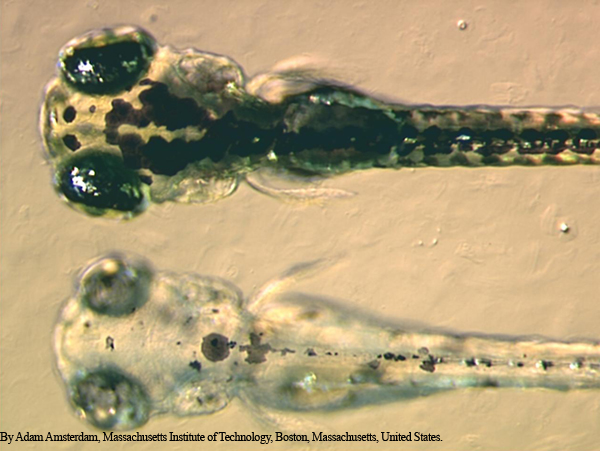Researchers at the University of California, Riverside have identified certain 3-D printed objects that are toxic to zebrafish embryos. Their work demonstrates the need for 3-D printing manufacturers to properly dispose of material waste.
According to William Grover, assistant professor of bioengineering in the Bourns College of Engineering, “These 3-D printers are like tiny factories in a box. We regulate factories. We would never bring one into our home. Yet, we are starting to bring these 3-D printers into our homes like they are toasters.”
Grover and team studied the toxicity of two of the most common types of 3-D printer on the market today; one uses light to solidify a special liquid into a pre-determined shape, and the other uses heat to melt plastic to form a part. Parts produced using the liquid-based printer were most toxic to zebrafish embryos, however objects produced using the melted plastic were also measurably toxic. The results were published in the journal, Environmental Science and Technology Letters.
In order to try to reduce the toxicity of 3-D printed parts, the researchers exposed the printed objects to ultraviolet (UV) light – a post-production technique that was successful at reducing toxicity. According to a report produced by Canalys, the value of the 3-D printing market grew to $2.5 billion in 2013 – from $288 million in 2012 – and it’s expected to balloon to $16.2 billion by 2018.
3-D printers are gaining in popularity among home and small business users and the price of a printer continues to drop. Printers that create 3-D objects using melted plastic can be purchased for as little as $200, while those that use the liquid printing method cost around $3,000.
Grover and his graduate student, Shirin Mesbah Oskui, made the discovery when Oskui began using 3-D printed materials in her experiments on zebrafish embryos. She noticed that the embryos began dying at an alarming rate after being exposed to parts from the printer.
This finding prompted Grover and Oskui to test the toxicity of objects made using two commercial printers. The researchers used a Dimension Elite printer made by Stratasys – which uses the melted plastic method – and a Form 1+ stereolithography printer made by Formlabs – which uses the liquid resin.
Using the printers, Oskui created small discs which she then placed in petri dishes along with the embryos. She then recorded the survival rates and hatch rates for the zebrafish, and noted any developmental abnormalities.
Oskui found that embryos exposed to the discs created using the plastic printer only slightly decreased survival rates, when compared to a control group. In contrast, half of the embryos exposed to discs created using the liquid resin printer were dead by day three of the experiment, with all of them having died by day seven.
Of the embryos that hatched after exposure to the liquid resin disc, 100 percent of the zebrafish were found to have developmental abnormalities. Oskui found that exposure to UV light for one hour significantly reduced toxicity of all parts produced by the printers.
“Many people, including myself, are excited about 3D printing, said Grover. “But, we really need to take a step back and ask how safe are these materials?” The materials used to create 3-D printed objects could be regulated by the Toxic Substances Control Act – a division of the Environmental Protection Agency. Unfortunately, the composition of these materials is often known only to the 3-D printer manufacturers themselves.
The researchers plan to continue their toxicity studies for the 3-D printed parts, and they hope to determine the level at which they could be toxic to humans. Grover and his lab also hope to determine the safest way of disposing of waste generated by the printer.
Sources:
- Study shows some 3-D printed objects are toxic – http://www.medicalnewstoday.com/releases/302119.php
- Oskui, S., Diamante, G., Liao, C., Shi, W., Gan, J., Schlenk, D., and Grover, W. (2015). Assessing and Reducing the Toxicity of 3D-Printed Parts. Envir Sci Tech Lett.












Join or login to leave a comment
JOIN LOGIN